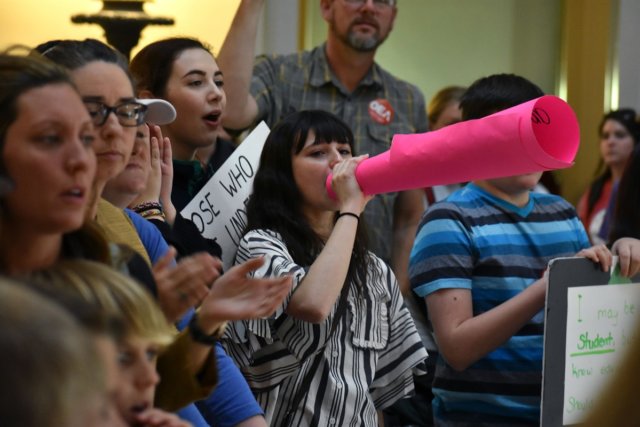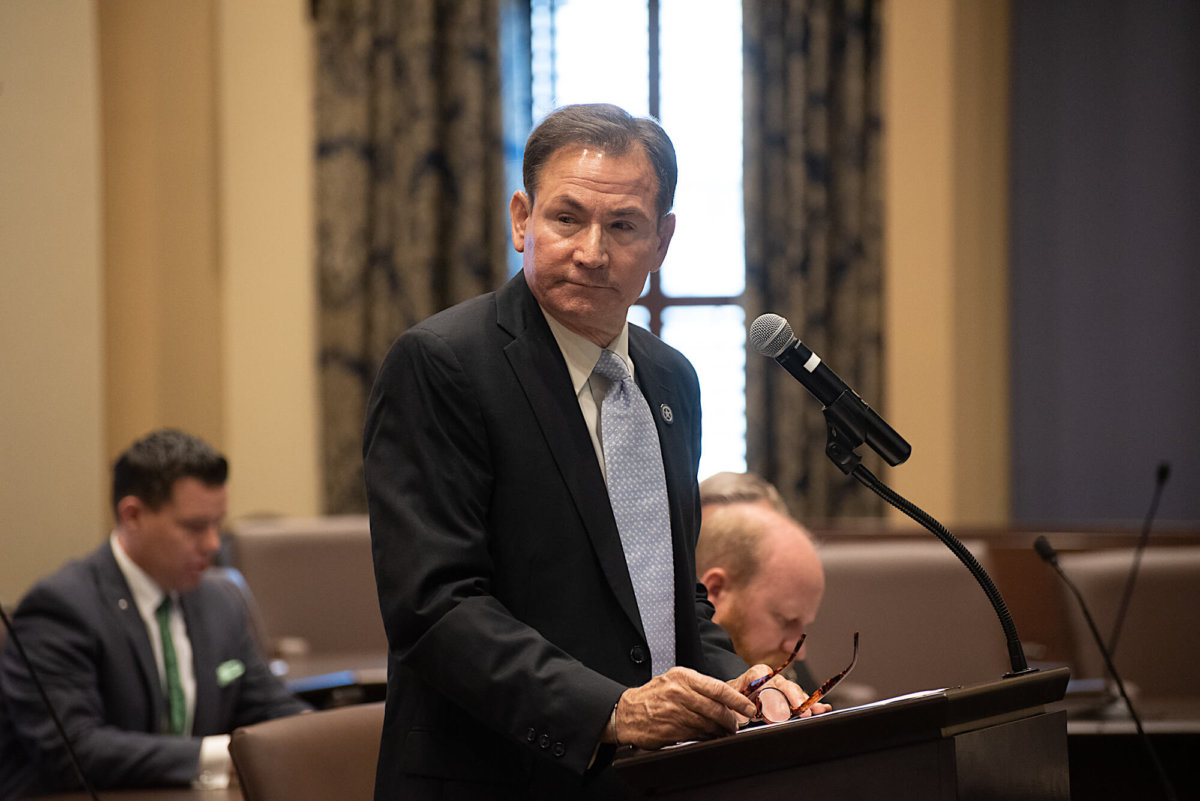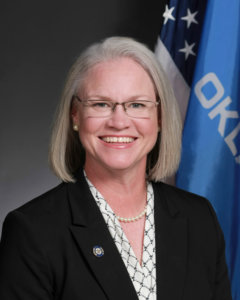

Oklahoma House leaders are saying “momentum” from last year’s large teacher pay raise has helped bring more than 1,100 new teachers into state classrooms, arguing that an additional $1,200 teacher salary hike this session would keep the ball rolling.
The Oklahoma State Senate’s leader, on the other hand, says lawmakers should provide new funding this year through the state funding formula in a manner that offers district school boards and superintendents greater flexibility and local control.
“So if they need to hire new teachers to get lower classroom sizes, they can use that money and their hands aren’t tied,” Senate President Pro Tempore Greg Treat (R-OKC) said Monday. “If they want to give a pay raise, their hands are not tied. They can do that. If they want to hire more counselors to be able to get mental health professionals into the education arena — which we’re in desperate need of — they could do that.”
Leaders of the House say a mandated teacher raise can still leave about $70 million for schools to make such investments. A $1,200 across-the-board teacher pay raise with the same mandate lawmakers passed last year would cost about $70 million.
“Currently, that would put us at No. 1 (in the region),” said House Appropriations and Budget Subcommittee Chairman Mark McBride (R-Moore). “That could change, but if we go ahead and pass that right now, it would put us at No. 1.”
House Common Education Chairwoman Rhonda Baker (R-Yukon) noted that the Texas Legislature is expected to pass a teacher pay raise of its own, but she emphasized the need to raise educator pay statewide.
“It’s better than continuing to fall in the rankings, and that’s what we don’t want to do. That’s where we have been,” said Baker, a former middle and high school teacher. “We’ve made a promise to our teachers and to our constituencies that we will address this problem and no longer be at the bottom.”
Sharp: ‘Section G totally messed that up last year’

A former teacher himself, Sen. Ron Sharp (R-Shawnee) believes lawmakers should remove the pay raise mandate featured in “Section G” of recent teacher pay bills. He said including that provision last year — which required raises of districts that were already paying well above the minimum salary schedule — created problems, especially for schools with enough local property tax revenue to be considered “off” of the state equalization formula.
“Section G totally messed that up last year because it just required the wealthy districts who were already paying above the general salary schedule to pay way above the general salary schedule,” Sharp said Monday. “They did not get nearly enough money to cover the pay increase.”
Sharp said the Legislature should “maintain equalization,” something he said is harder to do if the Legislature mandates a raise on the 39 districts not receiving state aid.
“There are those school districts that are very dependent upon the state revenue component who need that $1,200,” Sharp said. “And just because you’re off the formula doesn’t mean you’ve got a ton of money coming in. It just means you’re off the state aid.”
Baker: ‘We are going to be able to come out of this problem’

McBride, Baker and other members of House leadership argue that providing money for school districts to hire additional teachers and reduce class sizes is only possible by first addressing Oklahoma’s teacher shortage.
“If we continue what we are doing, we are going to be able to come out of this problem,” Baker said.
Statistics provided Monday by the Oklahoma State Department of Education show an increase of 1,148 classroom teachers from the end of last school year to OSDE’s 2019 personnel count: 41,305 then compared to 42,453 this semester.
“Preliminary personnel reports indicate counts of classroom teachers have grown this school year. We are encouraged that the historic teacher pay raise of last year created momentum for 1,148 new teachers in Oklahoma classrooms,” Superintendent of Public Instruction Joy Hofmeister said in a statement. “However, teacher pay alone will not turn around the severe teacher shortage that has impacted our state for several years.
“Student population growth in Oklahoma continues to outpace teacher hiring, even after last year’s pay increase. We must continue investing in the classroom and competitive teacher pay so our students can receive the competitive education they deserve.”
Treat praised the increase in state teachers and said more must be done for other district needs.
“That’s great,” Treat said. “I wouldn’t disagree and would also say that students are still getting notes home from their teachers saying would you please send up paper and ink.”
Follow @NonDocMedia on:
Ranson: ‘So many people are watching’
Oklahoma Education Association Vice President Katherine Bishop offered similar thoughts to Hofmeister.
“It’s a great first start. To add additional teachers to our classroom, that’s a positive,” Bishop said. “And that shows when you start investing in teachers’ wages and salaries, it makes a difference. But we’ve got a long road ahead of us.”
Asked whether OEA favors the House’s mandated teacher pay raise or the Senate’s school-by-school flexibility, Bishop said “it takes both” to attract and retain educators.
“It takes more funding into our classroom, but then it also takes increasing salaries, not only for teachers but for support professionals as well,” she said. “We still have 3,000 alternative certifications that districts asked to have. So we still have a huge deficit in getting teachers into our classrooms, which helps lower class sizes. We need that teacher increase in salary, but we need more money into our classrooms.”
Bishop said even if raises are not mandated to all districts under a Senate plan, union-affiliated teachers could still have leverage when it comes to their annual contracts.
“The majority of our districts that are above our state minimum salary schedule are ones that have negotiated, and they have a bargaining agreement with their district,” Bishop said. “So because of their collective action, they have been able to increase their salaries. But it is important that we continue to move that state minimum salary schedule as well, so for us it is vital that the money is not only in the state minimum salary schedule but across the board.”

A music teacher first elected in 2018, Rep. Trish Ranson (D-Stillwater) said she “could go either way” on the question of whether a teacher raise should be mandated across the board.
“I like the idea of teacher pay just because then it is set aside specifically for that. However, I do understand the other side of the argument, which says, ‘Let’s put more money in the funding formula and let districts decide,'” Ranson said. “I do believe that the Legislature is going to do right by teachers. So many people are watching. So many people are contacting their representatives and their senators. The pressure is on, and I think they are going to do right.”
Asked what she has learned about the legislative process during her first session, Ranson offered an analogy.
“Being in the Capitol now, it seems like legislation moves more like a train. You’ve got a track, and you’ve got to keep going, and it’s a slow pace. It may veer, but it stays on the track,” she said. “I think in the classroom, we think of it more like a highway where we can change lanes and go faster. But really it’s trying to make those steps incrementally that we can change the direction.
“So that’s been the struggle because things don’t go as fast as I would like them to do, but really we are still making a difference.”




















